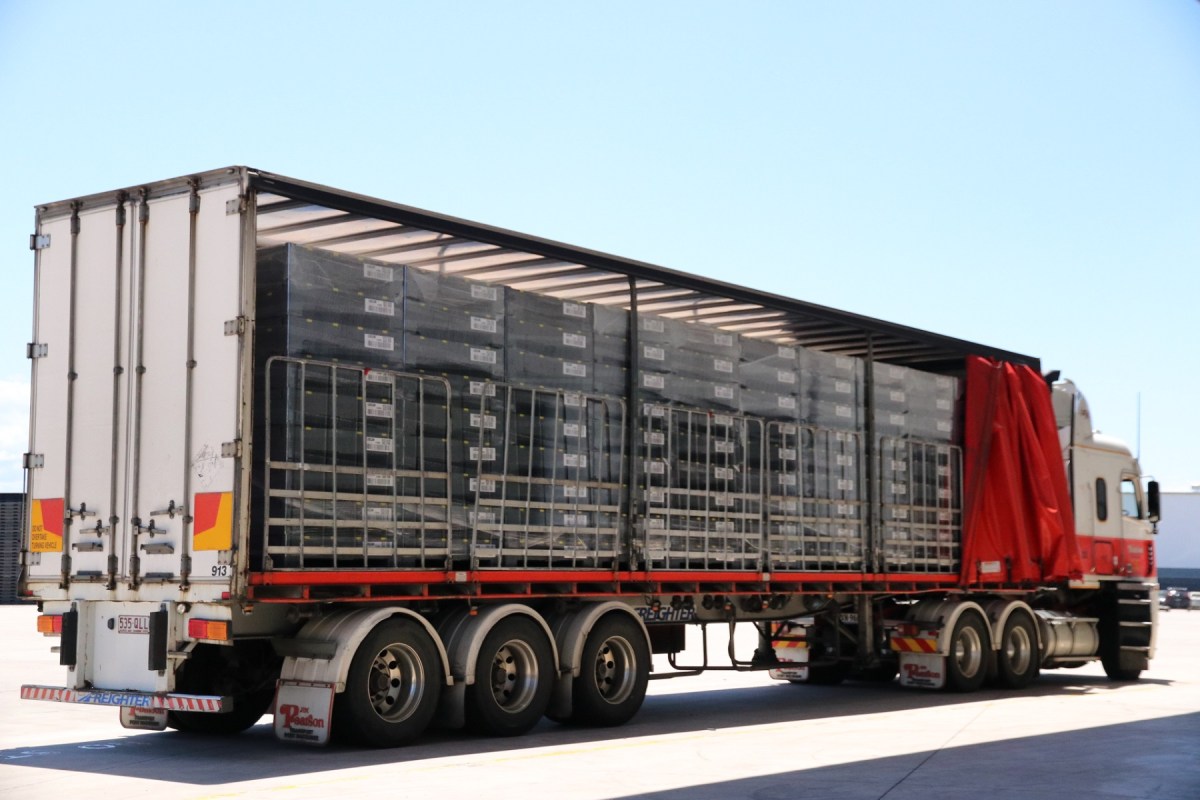Australian supermarket giant, Coles has digitalised its supply chain with Internet of Things (IoT) technology, deploying a world-first solution from Loscam and Thinxtra to monitor the location of and measure shock for 4,500 smart food bins moving poultry between farms and its distribution centre.
In 2021, Coles announced a major digital transformation strategy, which includes increasing the resilience of its critical supply chains, such as the Protein Cold Chain, responsible for sourcing and stocking poultry. The goal was to reduce the number of food bins it loses, understand whether and where these assets are being damaged, improve pooling of equipment for transit, and increase stock turnaround.
Following a competitive tender, Coles partnered with Loscam and subsequently deployed 4,500 smart, foldable food bins and fitted these with Internet-connected devices. The devices communicate location data in real time using Thinxtra’s national, public 0G Network, available to the supermarket via LoscamOnline, a specialised tracking platform.
The combined IoT solution has enabled a connected and transparent supply chain with timely insights into geolocation, geofencing, shock impact events, temperature, and bin status, and allows Coles to optimise transport routes and equipment pooling based on usage patterns.
“The smart food bins ensure that we can track the poultry from the moment they are loaded by our suppliers at farms, right through to the time they reach our distribution centre, reinforcing our food safety standards, while saving time and minimising waste,” Coles general manager of national meat processing, Larry Kavanagh said.
“We partnered with Loscam to deploy a purpose-built device and portal system with Thinxtra connectivity, tailored to the specific needs of our Protein Cold Chain department, giving us full visibility into our supply chain operations in real time. This is a crucial step to retain our customer-focused, quality-driven service that’s reflected in our supermarkets.”
Loscam and Thinxtra’s IoT solution provides data for each individual smart food bin, rather than just the trucks transporting them. Coles can therefore view the location of each individual asset in transit and receives alerts when food bins aren’t where they should be and any time there is an impact, including when bins are mishandled.
In addition, the ability to monitor asset performance, including temperature levels, creates assurance for the quality of food. This plays a major role in eliminating waste, and helps Coles maintain safe conditions during transit with the lowest possible energy consumption to support its Environmental, Social and Governance (ESG) objectives.

